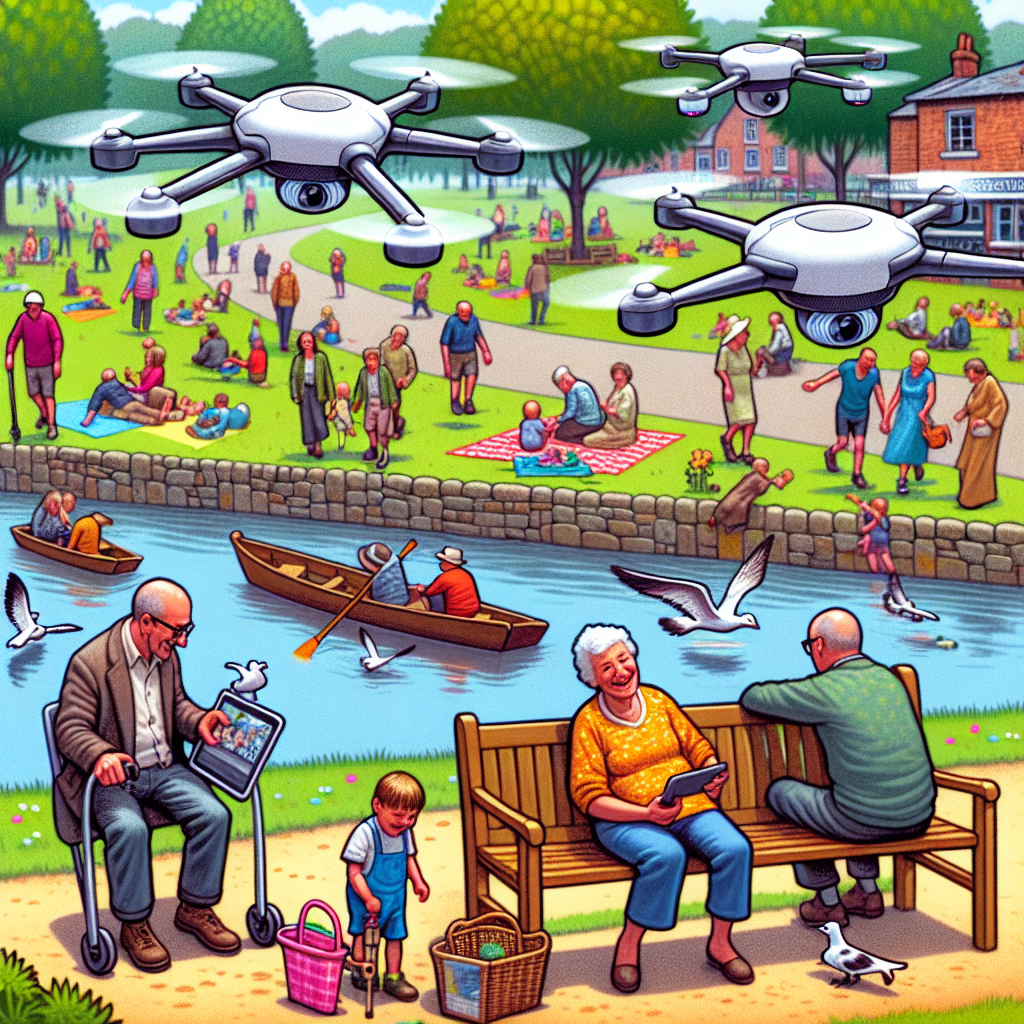**“Riverside Under Watch: Balancing Security and Privacy in Chesterburgh’s Sky”**

“He who fights with monsters should be careful lest he thereby become a monster.” Thus warned Friedrich Nietzsche, invoking a vigilance that is as necessary in the modest confines of Chesterburgh as it is in the sprawling theaters of global conflict. One must pause to consider, with an increasing sense of urgency, the installation of surveillance drones over our cherished Riverside Park—a green sanctuary which, until now, served as a locus for communal repose and conviviality, free from the mechanical gaze of the state’s unblinking eye.
Last week, the Chesterburgh Town Council, in what was described during the meeting as a “progressive step toward public safety,” authorized the deployment of pilot drones equipped with advanced facial recognition technology and real-time data transmission capabilities. The ostensible rationale is one of preempting crime and ensuring the safety of park-goers. Yet, this rationale must not forestall a deeper interrogation of the ethical and civic implications that such an unprecedented infusion of surveillance technology levies upon the social fabric of our town.
To begin, Riverside Park is not merely a geographic space delineated for recreation; it is an ideological and cultural text written, rewritten, and lived by generations of Chesterburghites. It is the stage upon which our town’s annual spring flower festival unfolds, where children learn the contours of social interaction, where the elderly congregate to exchange stories and halting memories of earlier days. To blanket this environment with drones—hovering sentinels equipped with the capability to index and surveil in perpetuity the minutiae of daily life—constitutes not only a technological innovation but a profound disruption of the social contract.
One must ask: who benefits from this aerial omnipresence? Proponents posit that the drones will augment the limited manpower of our local police force, allowing for rapid intervention should incidents arise. However, the notion of safety must be parsed carefully. How do we balance the community’s right to security with its equally vital right to privacy? Unfortunately, the rush to embrace these devices smacks of the technocratic hubris that presumes surveillance as an unequivocal good, devoid of collateral consequences. This is not merely a question of efficacy but of ethics. We have undertaken a step that risks inverting the power dynamics between citizen and state, converting the park from a space of mutual trust into a theater of unilateral observation.
Moreover, the deployment raises a host of legal ambiguities that demand immediate attention. The sensors’ capabilities extend beyond deterrence; the system logs granular data—time-stamped facial images, behavioral patterns, movement interrogations—that cohere into digital dossiers, stored indefinitely. The council’s assurances about data encryption and purging policies remain vaguely formulated and lack enforceable guarantees. In an era wherein data breaches proliferate with alarming regularity, the specter of personal information leaking into private hands or being co-opted for purposes antithetical to public welfare is not a mere figment of paranoid imagination but a credible apprehension grounded in empirical realities.
Philosopher Hannah Arendt’s meditation on the “banality of evil” surfaces here with poignant relevance. The quotidian normalization of surveillance technologies creates a slippery slope wherein citizens unwittingly acquiesce to encroachments on their autonomy. The cumulative effect is a subtle erosion of the democratic ethos, a transition toward a panoptic society in miniature. Are we prepared to accept Riverside Park as a proving ground for such experiments, thereby tacitly endorsing a future in which public spaces become surveilled cyberscapes rather than refuges for spontaneous sociality and dissent?
Public sentiment, as gauged in preliminary conversations and onl
